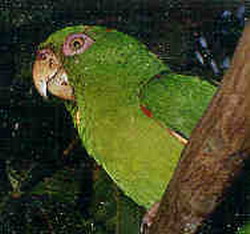Endemic cuban animal species endangered
- Submitted by: admin
- Environment
- Science and Technology
- 08 / 21 / 2007

According to the 2007-2010 National Environment Strategy of the Cuban Ministry of Science, Technology and the Environment, the principal threats to native animal species on the island include the destruction of habitat and ecosystems, the introduction of new species that are harmful to the native ones, poaching, and inadequate control and regulatory mechanisms.
The alarm is not unjustified. Even though it is difficult to say for sure what the impact of poaching has been, there is no doubt that it is having increasing consequences. An example of this is the gradual disappearance of several endemic species such as parrots, cateyes, hawksbill sea turtles (careyes), and even molluscs like polymites, siguas, quincontes or black coral, which can only be found now at great depths.
During 2006, more than 840 fines for illegal hunting and 540 for poaching were imposed by Forestry wardens across the country. In addition, agents from the Fishing Industry Ministry detected 2,129 offenders. Even Customs authorities have detected 71 cases, along with 80 people caught so far this year trying to illegally take protected species from Cuba.
There are several factors that lead to poaching, from economic need to the lack of regulations and control. Analyzing only one of these and leaving the rest aside is an error.
As shown by the testimonies of specialist and officials interviewed by JR and the research carried out by our reporters, the capture and trade of crocodiles, turtles, careyes, polymites, corals, cobos, quincontes, siguas, parrots, hummingbirds, mockingbirds, blackbirds, and butterflies is still very high. Even sea horses are trapped to be sold, before the impassive look or the conspiratorial greed of those who want to have a dissected «souvenir» of what was once a live animal.
Cuba, with a rich biological diversity, characterized by very high levels of endemism, should do more in all senses to preserve its fauna.
It is not enough to impose fines or conduct confiscations. It is necessary to have more environmental education, change peoples living and consumption habits, and especially to understand that the flora and fauna we enjoy today is not eternal. The survival of the species may be in our own hands.
Source: Juventud Rebelde
Comments